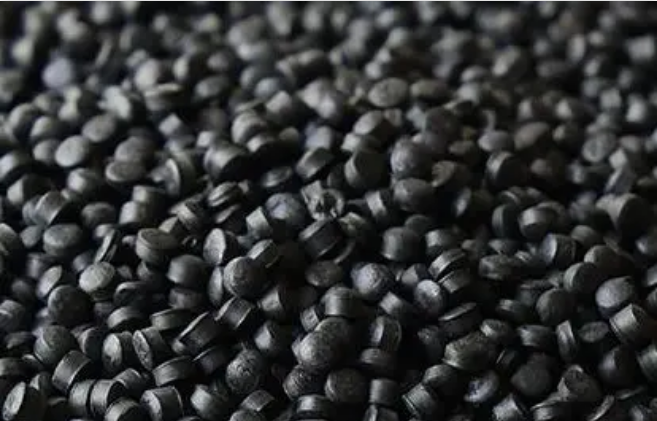Types and Efficacy Characteristics of Different Insulating Materials for Cables
Types and Efficacy Characteristics of Different Insulating Materials for Cables
In the realm of electrical engineering, the insulating material of a cable is a vital component that ensures the safe and efficient transmission of electricity. It acts as a barrier, preventing the flow of electric current from the conductor to unwanted paths, thus avoiding short circuits, electric shocks, and energy loss. Various insulating materials are employed in cables, each with its unique set of properties and suitability for specific applications. Let’s delve into the main types and their efficacy characteristics.
Polyvinyl Chloride (PVC)

Polyvinyl chloride, commonly known as PVC, is one of the most widely used insulating materials in cables. It boasts several notable advantages. Firstly, PVC is highly cost – effective, making cables insulated with it more affordable, which is a significant factor in large – scale electrical projects. Secondly, it has excellent flame – retardant properties. When exposed to fire, PVC tends to self – extinguish, reducing the risk of fire spreading and enhancing the safety of the electrical system.
In terms of chemical resistance, PVC holds up well against many common chemicals, oils, and solvents, making it suitable for use in industrial environments where such substances may be present. However, PVC has a relatively low maximum operating temperature, typically around 70°C to 90°C. This limits its application in high – temperature settings. It is commonly used in low – voltage power cables, building wiring, and domestic electrical appliances.
Cross – Linked Polyethylene (XLPE)

Cross – linked polyethylene (XLPE) is a modified form of polyethylene that undergoes a cross – linking process, which significantly improves its performance. One of the key advantages of XLPE is its high temperature resistance. It can operate at temperatures up to 90°C continuously, and even withstand short – term overloads at higher temperatures, making it suitable for medium and high – voltage cables.
XLPE also has excellent electrical insulation properties. It has a high dielectric strength, which allows it to effectively insulate conductors even under high voltage conditions, reducing the risk of electrical breakdown. Additionally, it is resistant to aging, ensuring a long service life for the cables. Unlike some other materials, XLPE is not hygroscopic, meaning it does not absorb moisture easily, which helps maintain its insulation performance in humid environments. XLPE – insulated cables are widely used in power transmission and distribution systems, as well as in industrial machinery and equipment.
Rubber (Natural and Synthetic)

Rubber, both natural and synthetic (such as EPDM and neoprene), is another important insulating material for cables. Rubber – insulated cables are highly flexible, which makes them easy to install in tight spaces, around bends, and in applications where the cable needs to move or flex, such as in portable electrical tools, mining equipment, and automotive wiring.
Natural rubber has good elasticity and electrical insulation properties, but it may not be as resistant to heat, ozone, and chemicals as synthetic rubbers. Synthetic rubbers like EPDM (Ethylene Propylene Diene Monomer) offer superior resistance to heat, weathering, and ozone. They can operate at higher temperatures, up to 120°C or more, and are suitable for outdoor applications where exposure to sunlight, rain, and other environmental factors is common. Neoprene, on the other hand, has excellent oil and chemical resistance, making it ideal for use in industrial settings where contact with oils and solvents is likely.
Polyethylene (PE)
Polyethylene (PE) is a lightweight and flexible insulating material. It has good electrical insulation properties, with a low dielectric constant and loss factor, which helps minimize energy loss during transmission. PE is also resistant to moisture and chemicals, making it suitable for use in underground cables and submersible applications.
However, PE has a lower melting point compared to XLPE, with a typical maximum operating temperature of around 70°C. This restricts its use in high – temperature environments. There are different types of PE, such as low – density polyethylene (LDPE) and high – density polyethylene (HDPE). HDPE has better mechanical strength and chemical resistance than LDPE, making it more suitable for applications that require greater durability. PE – insulated cables are commonly used in telecommunications, low – voltage power distribution, and some consumer electronics.
Fluorinated Polymers (PTFE, FEP, PFA)
Fluorinated polymers, including polytetrafluoroethylene (PTFE), fluorinated ethylene propylene (FEP), and perfluoroalkoxy alkane (PFA), are high – performance insulating materials. They exhibit exceptional resistance to high temperatures. PTFE, for example, can operate at temperatures up to 260°C, making it suitable for cables used in extreme high – temperature environments such as industrial furnaces, aerospace systems, and chemical processing plants.
These materials also have excellent chemical resistance, being inert to most acids, bases, and solvents. Their electrical insulation properties remain stable over a wide range of temperatures and frequencies, making them ideal for high – frequency signal transmission cables in communication systems and precision electronic equipment. Additionally, fluorinated polymers have low friction coefficients and are non – stick, which can be beneficial in applications where the cable needs to slide or move smoothly. However, these materials are more expensive than other insulating materials, which limits their use to specialized, high – performance applications.
In summary, the choice of cable insulating material depends on a variety of factors, including operating temperature, voltage level, flexibility requirements, chemical environment, and cost. Each type of insulating material has its own unique efficacy characteristics, enabling cables to perform optimally in different scenarios. By understanding these materials, engineers and professionals can select the most appropriate cable for a given application, ensuring the safety, reliability, and efficiency of the electrical system.
